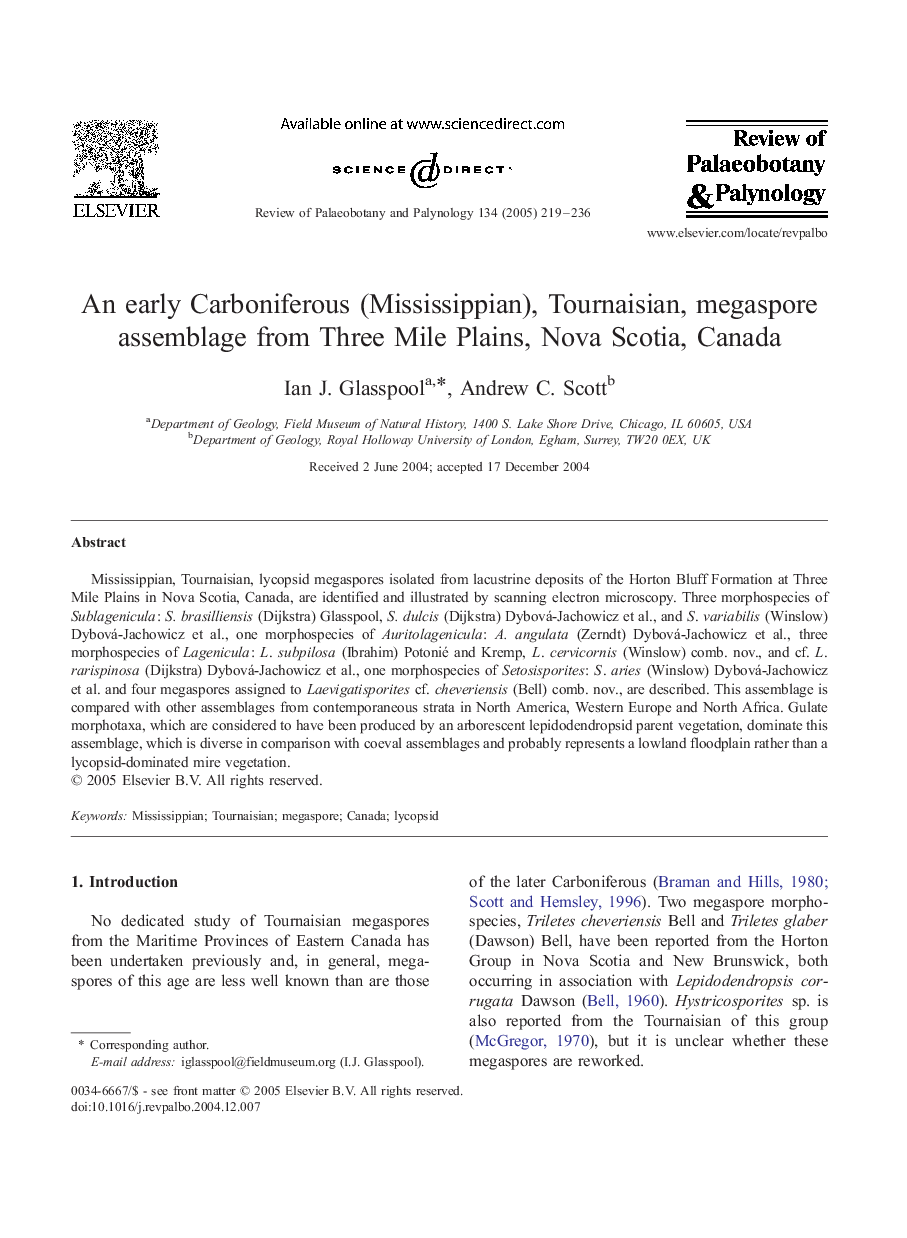| Article ID | Journal | Published Year | Pages | File Type |
|---|---|---|---|---|
| 10122089 | Review of Palaeobotany and Palynology | 2005 | 18 Pages |
Abstract
Mississippian, Tournaisian, lycopsid megaspores isolated from lacustrine deposits of the Horton Bluff Formation at Three Mile Plains in Nova Scotia, Canada, are identified and illustrated by scanning electron microscopy. Three morphospecies of Sublagenicula: S. brasilliensis (Dijkstra) Glasspool, S. dulcis (Dijkstra) Dybová-Jachowicz et al., and S. variabilis (Winslow) Dybová-Jachowicz et al., one morphospecies of Auritolagenicula: A. angulata (Zerndt) Dybová-Jachowicz et al., three morphospecies of Lagenicula: L. subpilosa (Ibrahim) Potonié and Kremp, L. cervicornis (Winslow) comb. nov., and cf. L. rarispinosa (Dijkstra) Dybová-Jachowicz et al., one morphospecies of Setosisporites: S. aries (Winslow) Dybová-Jachowicz et al. and four megaspores assigned to Laevigatisporites cf. cheveriensis (Bell) comb. nov., are described. This assemblage is compared with other assemblages from contemporaneous strata in North America, Western Europe and North Africa. Gulate morphotaxa, which are considered to have been produced by an arborescent lepidodendropsid parent vegetation, dominate this assemblage, which is diverse in comparison with coeval assemblages and probably represents a lowland floodplain rather than a lycopsid-dominated mire vegetation.
Related Topics
Physical Sciences and Engineering
Earth and Planetary Sciences
Palaeontology
Authors
Ian J. Glasspool, Andrew C. Scott,
